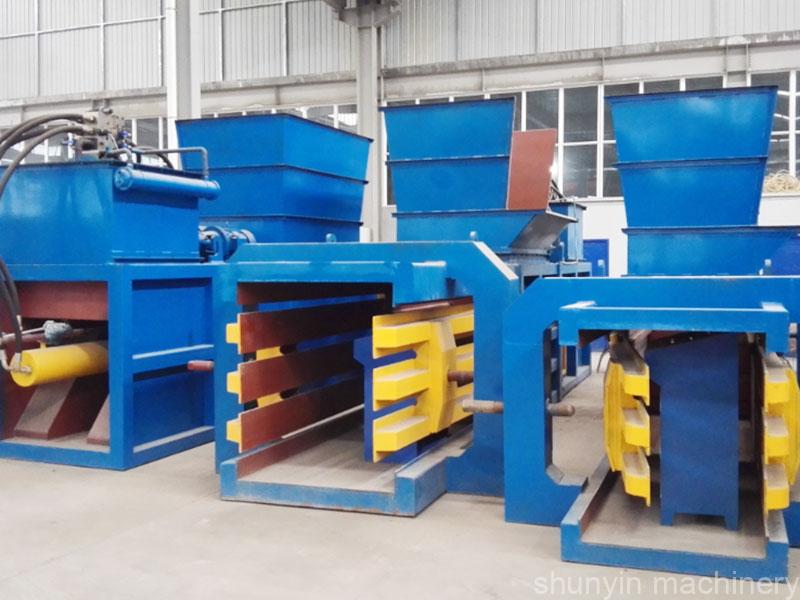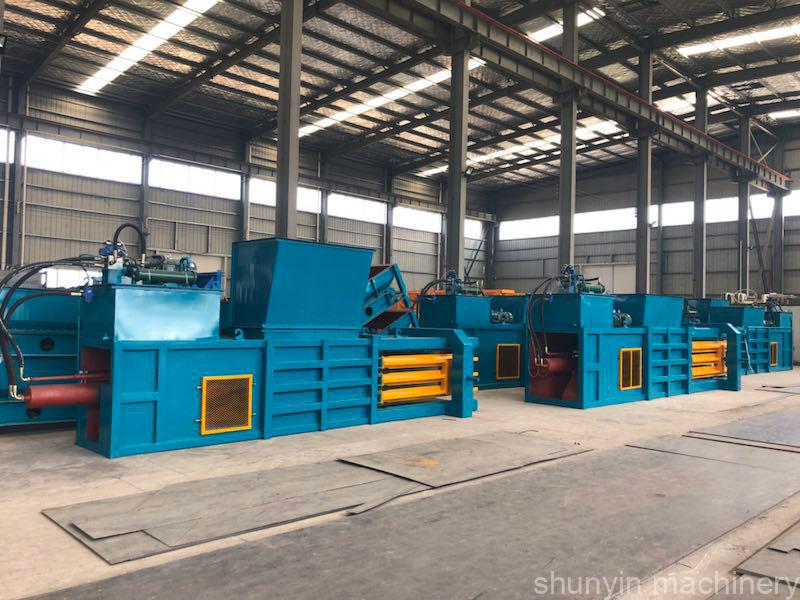
Are you searching for a reliable hydraulic baler supplier in China but feeling overwhelmed by the numerous options? Many businesses face this challenge, risking investments with subpar suppliers. Identifying top-quality manufacturers is crucial for ensuring the efficiency and longevity of your baling operations.
Top hydraulic baler suppliers in China known for high quality include Jining Shunyin1, Zhengzhou Sinobaler, Jiangsu Huahong Technology, Hangzhou DALI Technology, and Wanshida Baler Machinery. These companies offer durable, efficient balers with strong export capabilities and positive customer feedback.
Imagine partnering with a supplier that not only provides high-quality machinery but also offers exceptional support and customization options, ensuring your business operations run smoothly and efficiently.
What is the average price of a baler?
Have you ever wondered how much you should budget for a hydraulic baler to ensure you get the best quality without overspending? Understanding the average price range is essential for making informed purchasing decisions and optimizing your investment.
The average price of a hydraulic baler from China typically ranges between $25,000 and $60,000, depending on the machine’s specifications, capacity, and additional features.

Factors Influencing Baler Prices
Several factors contribute to the pricing of hydraulic balers. These include the baler’s capacity, brand reputation, technological advancements, and customization options. Higher capacity balers with advanced features generally command higher prices due to their enhanced performance and efficiency.
Capacity and Features
Balers with larger capacities can handle more material, reducing the frequency of operation and increasing productivity. Features such as automated controls, safety mechanisms, and energy-efficient systems also add to the overall cost but provide long-term benefits in terms of reliability and maintenance.
Customization and After-Sales Support
Customized balers tailored to specific business needs may come at a premium price. Additionally, comprehensive after-sales support, including warranties, maintenance services, and readily available spare parts, can influence the initial investment but ensure sustained operational efficiency.
| Specification | Price Range (USD) | Description |
|---|---|---|
| Basic Models | $25,000 – $35,000 | Standard features, suitable for small to medium operations |
| Mid-Range Models | $35,000 – $45,000 | Enhanced features, higher capacity, suitable for larger operations |
| High-End Models | $45,000 – $60,000 | Advanced technology, maximum capacity, customized options |
Understanding these factors allows you to assess your requirements accurately and choose a baler that offers the best value for your investment.
What are the different types of balers?
Are you confused by the variety of balers available and unsure which type best suits your business needs? The right baler type can significantly enhance your operational efficiency and meet specific material handling requirements.
There are several types of hydraulic balers, including horizontal hydraulic balers, vertical hydraulic balers, two-ram balers, and balers with integrated shears, each designed to cater to different material handling and compacting needs.

Exploring Baler Varieties
Navigating the diverse landscape of hydraulic balers can be challenging, but understanding each type’s unique features and applications is key to making the right choice for your business.
Horizontal Hydraulic Balers
Horizontal balers are widely used in waste management and recycling industries for compressing materials into dense, transportable bales. Their design allows for easy integration into production lines, making them suitable for continuous operations.
Vertical Hydraulic Balers
Vertical balers offer a compact footprint, ideal for facilities with limited space. They are efficient in handling large volumes of materials, making them a popular choice for businesses aiming to maximize space utilization without compromising on capacity.
Two-Ram Balers
Two-ram balers combine the benefits of single and dual ram systems, providing enhanced control over the baling process. This versatility makes them suitable for a variety of materials and operational scales.
Balers with Integrated Shears
Balers with integrated shears add an extra layer of functionality by incorporating cutting mechanisms. This feature is particularly useful for materials that require shredding before baling, streamlining the process and reducing the need for additional equipment.
| Type of Baler | Primary Use | Key Features |
|---|---|---|
| Horizontal Hydraulic Baler | Waste management, recycling | Continuous operation, high compaction |
| Vertical Hydraulic Baler | Facilities with limited space | Compact design, high volume handling |
| Two-Ram Baler | Versatile material handling | Enhanced control, suitable for various materials |
| Baler with Integrated Shears | Shredding and baling combined | Streamlined process, reduced equipment needs |
By selecting the appropriate baler type, you can tailor your operations to meet specific needs, ensuring reliability and efficiency in your material handling processes.
What is a baler machine?
Have you ever been unsure about what exactly a baler machine does and how it can benefit your business operations? Clarifying its functions is essential for optimizing your material handling and recycling processes.
A baler machine is a piece of equipment that compresses materials into compact bales, facilitating easier handling, transportation, and storage. Hydraulic balers, in particular, use hydraulic pressure to achieve high-density bales, enhancing efficiency and reducing operational costs.

Understanding Baler Machines
Baler machines play a crucial role in various industries by transforming loose, bulky materials into manageable bales. This transformation not only improves the efficiency of material handling but also reduces the costs associated with transportation and storage.
Key Components of a Baler Machine
- Hydraulic Ram: The core component that applies pressure to compress materials into bales.
- Compression Chamber: The space where materials are compacted into bales.
- Control System: Allows operators to adjust settings like bale size, compression force, and cycle time.
- Safety Mechanisms: Ensures safe operation and prevents accidents during the baling process.
| Component | Function |
|---|---|
| Hydraulic Ram | Applies consistent pressure for compaction |
| Compression Chamber | Houses materials during the baling process |
| Control System | Adjusts baling parameters for different needs |
| Safety Mechanisms | Protects operators and equipment during use |
Advantages of Using Baler Machines
Baler machines offer several benefits that make them indispensable in material handling and recycling processes:
- Efficiency: They significantly reduce the volume of materials, leading to cost savings in transportation and storage.
- Versatility: Capable of handling a wide range of materials, from paper and cardboard to plastics and metals.
- Durability: Built to withstand heavy usage, ensuring long-term reliability and minimal maintenance.
- Customization: Many manufacturers offer tailored solutions to meet specific business needs, enhancing operational workflows.
Applications of Baler Machines
Baler machines are widely used across various industries, including:
- Waste Management: Compressing waste materials to reduce landfill usage and improve recycling rates.
- Recycling: Facilitating the processing of recyclable materials by compacting them into transportable bales.
- Agriculture: Baling hay, straw, and other agricultural by-products for easier handling and storage.
- Manufacturing: Managing scrap materials and optimizing storage space within manufacturing facilities.
Understanding the multifaceted functions of baler machines enables businesses to enhance their material handling processes, leading to improved efficiency and cost-effectiveness.
What is the purpose of baling?
Are you unclear about why baling is essential for your business operations and how it can impact your overall efficiency? Understanding the purpose of baling is crucial for optimizing your material handling and recycling processes.
The primary purpose of baling is to compress materials into dense, manageable bales, which facilitates easier handling, transportation, and storage, ultimately enhancing operational efficiency and reducing costs.

The Role of Baling in Business Operations
Baling plays a pivotal role in transforming loose, bulky materials into compact bales, which significantly improves the efficiency of material handling and logistics. This function is vital for businesses involved in waste management, recycling, agriculture, and manufacturing, where large volumes of materials need to be processed and transported regularly.
Enhanced Efficiency and Cost-Effectiveness
By compressing materials, baling reduces the volume, leading to lower transportation costs and more efficient use of storage space. This efficiency translates to cost savings and higher profitability for businesses by minimizing the expenses associated with material handling and disposal.
Environmental Impact
Baling contributes to environmental sustainability by enabling effective recycling processes. Compact bales are easier to manage and recycle, reducing the overall environmental footprint of businesses and aligning with global sustainability goals.
Operational Streamlining
Integrating baling into production lines streamlines operations by automating the compaction process. This automation minimizes manual labor, reduces the risk of workplace injuries, and ensures consistent bale quality, which is crucial for maintaining reliability in business operations.
Benefits of Baling
Implementing baling processes offers numerous benefits that can enhance your business operations:
- Space Optimization: Baling maximizes the use of available storage space by reducing the volume of materials.
- Transportation Efficiency: Compact bales are easier and more cost-effective to transport, reducing logistical expenses.
- Material Preservation: Proper baling ensures that materials are preserved in optimal condition for future use or recycling.
- Safety and Cleanliness: Baling minimizes the clutter and potential hazards associated with loose materials, promoting a safer and cleaner working environment.
| Purpose | Benefits | Impact on Business Operations |
|---|---|---|
| Material Compaction | Reduces volume, lowers transportation costs | Enhances cost-effectiveness |
| Ease of Handling | Simplifies storage and logistics | Facilitates smoother operations |
| Automation | Streamlines production, ensures consistency | Improves reliability and quality control |
| Environmental Sustainability | Promotes recycling and waste reduction | Aligns with sustainability goals |
Understanding the purpose and benefits of baling enables businesses to implement effective material handling strategies, leading to improved operational efficiency and cost savings.
Conclusion
Choosing the best quality hydraulic baler supplier in China involves evaluating their reputation, product quality, customization capabilities, and after-sales support. Partnering with leading manufacturers like Shunyin, Sybaling Machine, Zhengzhou Langchuang, and Shanghai Xinwang ensures you receive reliable, high-quality balers that enhance your business operations and competitiveness in the market.
-
Jining Shunyin Machinery Co.,Ltd Baling Machine Manufacturer ↩








